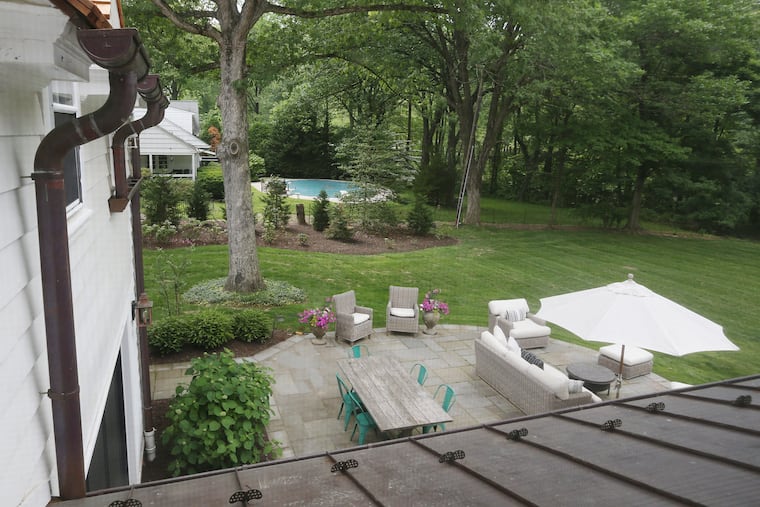Anxious? Your living space might not be helping.
Given what some are calling an anxiety epidemic — with nearly one-fifth of Americans reporting a stress-related disorder — the need for a safe and calming place feels especially important.

Even though the research is in its early stages, a growing number of architects, designers, professional organizers, and environmental psychologists believe the spaces we live in are as inextricably linked to our neurological well-being as sleep, diet and exercise.
“Homes have served the same purpose since the beginning of time,” said Sally Augustin, an environmental psychologist who runs the consulting firm Design With Science in Illinois. “We’ve always had the need for some sort of retreat or sanctuary.”
Given what some are calling an anxiety epidemic — with nearly one-fifth of Americans reporting a stress-related disorder — the need for a safe and calming place feels especially important.
Most environmental psychologists are reluctant to be overly prescriptive because every person and family is different. That said, here are eight research-backed steps to make your home more calming.
Get light right. Exposure to natural light helps our bodies produce vitamin D, serotonin, and melatonin, and can even increase productivity — but it can also have hidden stressors. One is glare, which can cause eyestrain and sensitivity, especially for those with anxiety disorders or chronic migraines. Sheer or anti-glare blinds help filter sunlight and are especially helpful in rooms where you use a computer.
Once the sun goes down, do what you can to achieve full darkness, especially if you live in a city. Dak Kopec, who has written several books on the psychology of design, says streetlight glare and bright alarm clocks can contribute to insomnia. That’s not good, because disrupting sleep can throw off our serotonin levels, which in turn interrupts mood regulation, he says. Invest in room-darkening curtains or blinds in your bedroom.
When it comes to artificial light, avoid harsh LEDs and pick bulbs labeled “warm and white.”
Keep the walls muted and bright. Paint is one of the easiest and least expensive ways to transform a space, so if you’re eager to make changes, start there. “Research suggests that we feel cooler in cooler-toned rooms and warmer in warmer-toned rooms, regardless of the actual temperature, so this is one way to steer a space to your comfort zone,” Israel said. Mine your memory for colors that have sentimental value, and steer clear of shades that trigger negative emotional responses.
Choose patterns wisely. Shoot for a balance of color, texture, and pattern. “Places that are stark and devoid of detail are just as unnerving to us as spaces with way too much going on,” Augustin said, “so your best bet is to aim for moderate visual complexity.” Limit yourself to one or two colors and patterns and casually repeat them throughout the space, using accessories such as pillows or vases to tie the room together.
Consider scent and sound. Studies have shown that lavender is calming, but environmental psychologists also recommend finding scents you personally respond to, perhaps one reminiscent of a Redwood forest vacation, nights by a bonfire, or even baked cookies. Certain sounds can be soothing, too.
De-clutter. Recent studies show a link between disorderly living spaces and stress, procrastination and life dissatisfaction, suggesting that Marie Kondo is on to something. And the dissatisfaction can snowball. “The bigger the pile, the more you procrastinate, the more stressful it becomes,” says Stacy Thomes, a professional organizer in Calabasas, Calif. “Anxiety, ultimately, is about a loss of control, so I tell my clients: ‘You’re giving your stuff the control. You need to get control over your stuff.’”
Enhance your outdoor space. “Humans have a mind-body connection to nature,” said Carolyn Rickard-Brideau, corporate president of the international architecture firm Little and a member of the advisory board of the Well Building Standard, a certification program that uses medical research to gauge spaces’ health benefits. She cited a 1989 study that found that simply stepping into nature can restore your physical and mental energy. “Being outside reduces blood pressure and helps us focus,” she said. If your patio, balcony or backyard goes virtually unused, ask yourself why.
Consider a pet. Animals can cause humans to release oxytocin, also known as the neurochemical of love, and dogs in particular have been shown to reduce our stress hormones. In a time when social interactions increasingly occur online, Kopec says, pets “help fill a contact niche,” which lowers our blood pressure and aids in empathy. For something a little more manageable, he points to fish and aquariums, which may reduce heart rate and lower blood pressure.
Bring nature indoors. In addition to being natural air purifiers and stress reducers, Kopec says, plants have organic, irregular shapes that are inherently relaxing to the eye. “And they require tending and nurturing, which gives us a sense of control,” he added. Start with low-maintenance varieties such as aloe, ivy and jade plants.